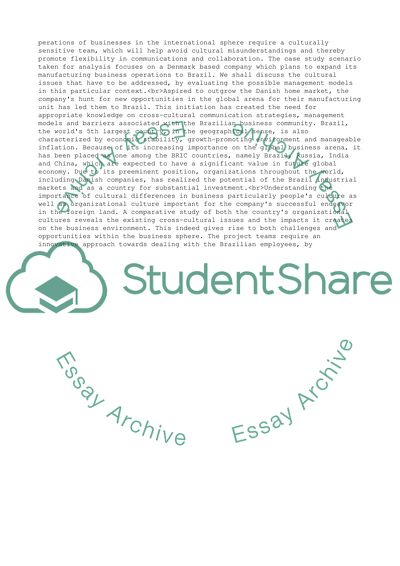Cite this document
(“Case study scenario: A Global business from Denmark is planning to set Assignment”, n.d.)
Case study scenario: A Global business from Denmark is planning to set Assignment. Retrieved from https://studentshare.org/management/1647202-case-study-scenario-a-global-business-from-denmark-is-planning-to-set-up-a-new-manufacturing-business-unit-in-brazil
Case study scenario: A Global business from Denmark is planning to set Assignment. Retrieved from https://studentshare.org/management/1647202-case-study-scenario-a-global-business-from-denmark-is-planning-to-set-up-a-new-manufacturing-business-unit-in-brazil
(Case Study Scenario: A Global Business from Denmark Is Planning to Set Assignment)
Case Study Scenario: A Global Business from Denmark Is Planning to Set Assignment. https://studentshare.org/management/1647202-case-study-scenario-a-global-business-from-denmark-is-planning-to-set-up-a-new-manufacturing-business-unit-in-brazil.
Case Study Scenario: A Global Business from Denmark Is Planning to Set Assignment. https://studentshare.org/management/1647202-case-study-scenario-a-global-business-from-denmark-is-planning-to-set-up-a-new-manufacturing-business-unit-in-brazil.
“Case Study Scenario: A Global Business from Denmark Is Planning to Set Assignment”, n.d. https://studentshare.org/management/1647202-case-study-scenario-a-global-business-from-denmark-is-planning-to-set-up-a-new-manufacturing-business-unit-in-brazil.


